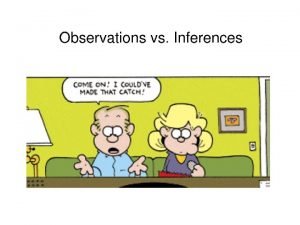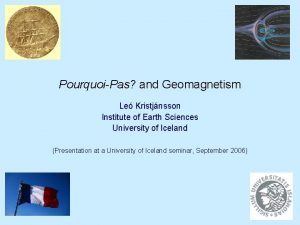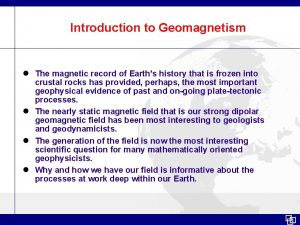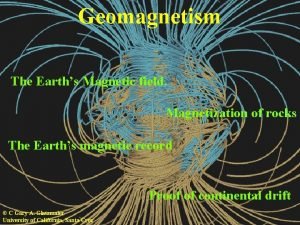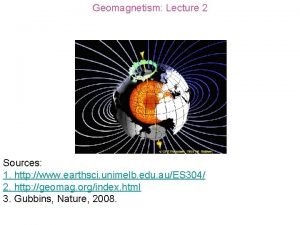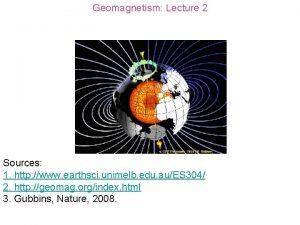Geomagnetism 3 The use of geomagnetism to infer








- Slides: 8

Geomagnetism 3: The use of geomagnetism to infer past plate motion Recommended reading: The Solid Earth by C. M. R. Fowler

The use of geomagnetism to infer past plate motion: Polarity reversals and magnetization The determination of past plate motion is possible thanks to two facts: • Magnetic pole reversals • Rocks can record the Earth’s past magnetic field

The use of geomagnetism to infer past plate motion: Palaeolatitude The magnetic inclination and the magnetic latitude are related each other through: where I is the magnetic inclination and l is the magnetic latitude, i. e. I=90 -l. Thus, measurement of the magnetic angle of inclination of the remnant magnetization of a suitable lava or the youngest sediment may be used to infer the magnetic palaeolatitude of a given piece of continent. Unfortunately, it is not possible to infer palaeomagnetic data to infer palaeolongitude.

The use of geomagnetism to infer past plate motion: Palaeolatitude • Isoclinal (lines of equal inclination) chart of the Earth magnetic field for 1945. • The curviness of the contours is due to the nondipole nature of the magnetic field. • Thus, the palaeolatitude obtained from the equation on the previous slide is imprecise.

The use of geomagnetism to infer past plate motion: Magnetic stripes in the ocean First detailed map of magnetic anomalies published in 1961: • Over the ocean, magnetic field measurements are made by towing a magnetometer behind the ship. • These instruments measure the magnitude of the magnetic field, but not the direction. • The magnetic anomaly is obtained by subtracting the regional field from the measured field. • The magnetic stripes run parallel to the ridges and are symmetric about their axes. • The stripes are offset by fracture zones.

The use of geomagnetism to infer past plate motion: Magnetic stripes in the ocean • The origin of the magnetic stripes was first correctly understood in 1963. • The width of the magnetic stripes is determined by the half-spreading rate and the time intervals between polarity reversals. • Thus, to “decode” the magnetic pattern it is necessary to know either when the earth’s field reversed or else the half-spreading rate.

The use of geomagnetism to infer past plate motion: The Pacific Ocean When combined with age data, the interpretation of magnetic anomalies becomes simple. Note the 20 degrees difference between the present day trend of the JDF ridge and the strike of older anomalies.

The use of geomagnetism to infer past plate motion: The Pacific Ocean The 20 degrees difference between the present-day trend of the JDF ridge and the strike of older anomalies is attributed to changes in ridge direction (i. e. , changes in Euler pole). Two possible models: • The rotation model. During the adjustment period, the spreading is asymmetric. • The propagating rifting. The rift jump, and then lengthen. This model seems suitable for the JDF ridge.






